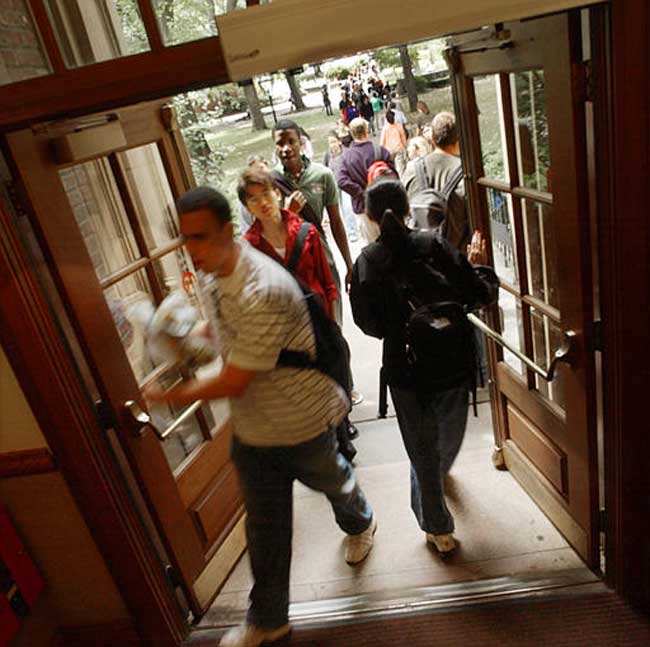Study: School Culture Affects Student Violence

Along with personality and peer relationships, a school’s culture also influences whether a child resolves an issue peacefully or goes off the deep end and resorts to violence, a new study finds.
The results, reported in the March issue of the journal Youth & Society, come as attention is focused on the mass shooting at Virginia Tech, an extreme example of student aggression at its most lethal.
Though it's no magic solution , the research could help ensure and direct intervention in middle schools where students need it most, the scientists say.
Like any institution, each school has its own “persona,” or the unwritten set of norms and beliefs that dictate the everyday workings of that school. This so-called culture would include which student and teacher behaviors are unacceptable, the level of interaction between teachers and students, what constitutes good teaching techniques and the importance of values such as honesty.
Mean kids?
Janet Reis of the University of Illinois, Champaign, and her colleagues surveyed nearly 112,000 students in grades 6 through 8 with geographically, socio-economically, and racially diverse backgrounds from about 200 middle schools.
They defined aggression as the number of times a student reported hitting other people, acting mean toward others and getting into fights with other students. The participants reported how often they had engaged in these behaviors, from never to more than 12 times, over the previous six months. Other questions focused on a student’s problem-solving skills, coping strategies, daily hassles and social and emotional support from family and teachers.
Sign up for the Live Science daily newsletter now
Get the world’s most fascinating discoveries delivered straight to your inbox.
Survey items included:
Problem-Solving Skills When something happens at school that really upsets you, how frequently do you …
- Think about what you did in the same kind of situation before.
- Do things to take your mind off the problem.
- Concentrate on something good that could come out of it.
Negative Coping Strategies When something happens at school that really upsets you, how frequently do you …
- Get mad at people or things that caused the problem.
- Take a big chance, do something risky.
- Take it out on the world in general.
- Take it out on other people.
Other questions measured the students' sense of belonging in school, whether they learned about cultural diversity and if they had the opportunity to participate in their school’s rule making. School setting Individual traits, such as a person’s coping skills, had the largest impact on students’ level of aggression, but campus culture also factored in.
"The school had a relatively modest but nonetheless significant effect on student aggression," Reis said.
They found three key features of a school’s culture linked with reduced aggressive behaviors: teaching that emphasized understanding over memorization of concepts; whether students participated in making school rules; and education about cultural diversity.
"The direction from this is that teachers and administrators might explore how to include participation from their students," Reis said.
Also, while students who reported enjoying school showed fewer aggressive behaviors, those who said they were bored at school also described themselves as being involved in fights.
Reis said student violence can be reduced, "if schools keep remembering that they really do have an impact on the children who come in every day, that it matters how the adults configure the school day.”
Jeanna Bryner is managing editor of Scientific American. Previously she was editor in chief of Live Science and, prior to that, an editor at Scholastic's Science World magazine. Bryner has an English degree from Salisbury University, a master's degree in biogeochemistry and environmental sciences from the University of Maryland and a graduate science journalism degree from New York University. She has worked as a biologist in Florida, where she monitored wetlands and did field surveys for endangered species, including the gorgeous Florida Scrub Jay. She also received an ocean sciences journalism fellowship from the Woods Hole Oceanographic Institution. She is a firm believer that science is for everyone and that just about everything can be viewed through the lens of science.










